3-Day Ultimate Exploration Guide to Florence, Italy
Florence, Italy
3 days
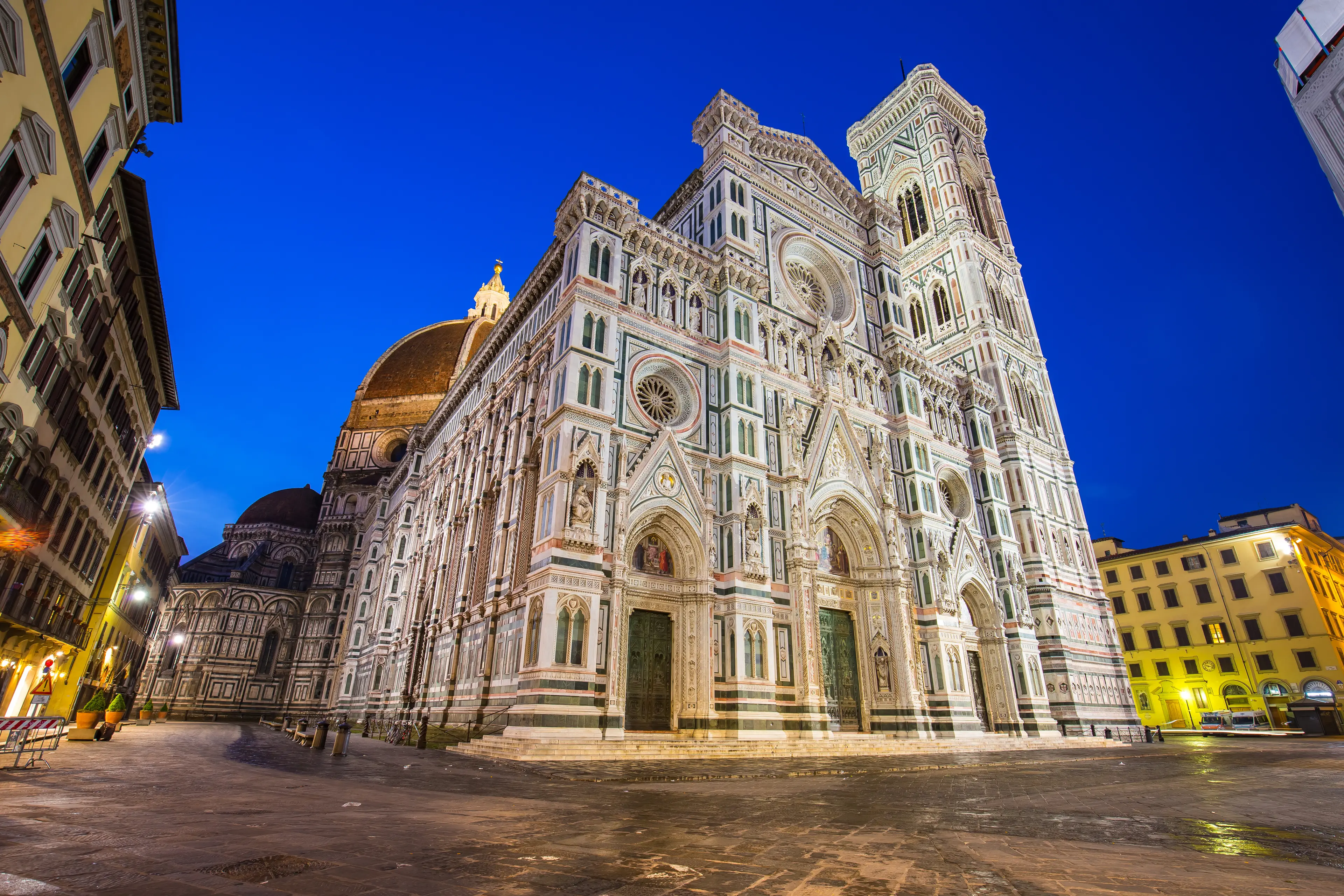

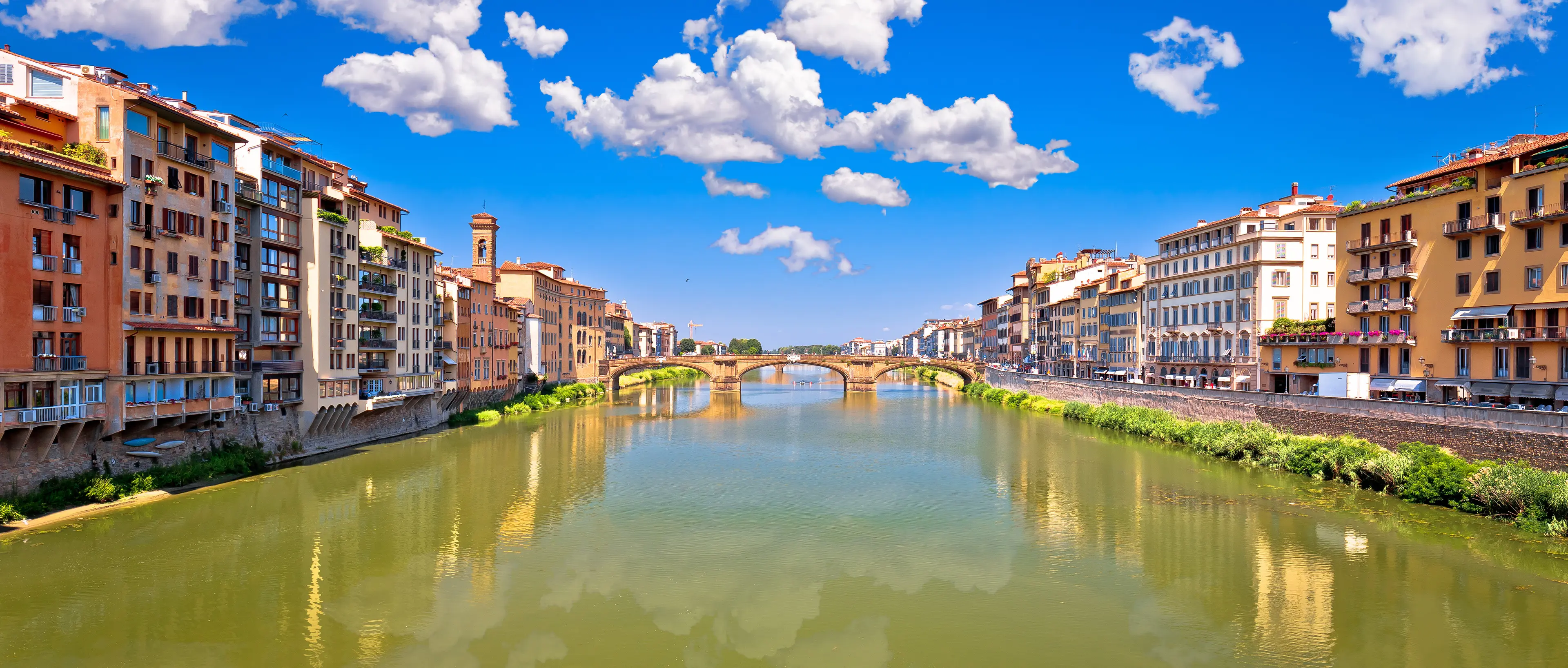


About Florence, Italy
Experience the heart of the Renaissance in Florence, Italy. This city is a treasure trove of art and architecture, home to masterpieces like Michelangelo's "David" and Brunelleschi's Dome. Wander through the Uffizi Gallery, stroll across the Ponte Vecchio, and marvel at the grandeur of the Florence Cathedral. Don't miss the chance to taste authentic Tuscan cuisine, especially the famous Florentine steak. Explore the local markets for unique souvenirs and enjoy the panoramic view from Piazzale Michelangelo. Florence's compact size makes it perfect for walking tours, allowing you to soak in its rich history and vibrant culture at your own pace. Whether you're an art lover, a foodie, or a history buff, Florence promises an unforgettable journey.
3-Day Itinerary
Day 2
Discovering the Gardens and Cuisine of Florence
Morning
Begin your second day with a visit to the Accademia Gallery, home to Michelangelo's iconic statue of David. The gallery also houses a collection of Renaissance paintings and sculptures.
Lunch
Have lunch in a charming café in the San Lorenzo district. Try the panini toscani, a sandwich filled with local cheeses and cured meats.
Afternoon
Spend the afternoon exploring the Boboli Gardens, a historic park filled with beautiful statues, fountains, and grottoes. The gardens also offer fantastic views of Florence.
Dinner
Dine in a rustic trattoria in the Santa Croce district. Sample traditional dishes like pappardelle al cinghiale, a pasta dish with wild boar sauce.
Evening
In the evening, visit the Duomo, Florence's iconic cathedral. The cathedral is beautifully lit up at night, and you can climb to the top of the dome for a breathtaking view of the city.
Day 3
Shopping and Culture in Florence
Morning
On your final day, visit the Palazzo Pitti, a grand Renaissance palace that houses several museums. Don't miss the Palatine Gallery, which displays a vast collection of paintings by Raphael, Titian, and other masters.
Lunch
Enjoy lunch in a local enoteca in the Santo Spirito district. Here, you can sample a variety of Tuscan wines, paired with a selection of regional cheeses and charcuterie.
Afternoon
Spend the afternoon at the Mercato Centrale, a bustling food market where you can shop for local products like olive oil, wine, and fresh produce. It's also a great place to try street food like lampredotto, a Florentine specialty made from cow's stomach.
Dinner
For your final dinner in Florence, choose a ristorante in the Piazza della Signoria. Here, you can enjoy a leisurely meal while watching the world go by in one of the city's most famous squares.
Evening
End your trip with a night at the opera. The Teatro del Maggio Musicale Fiorentino offers a variety of performances, from classic operas to contemporary concerts.
Attractions in Itinerary (9)

1Uffizi Gallery
One of the world's most famous fine art museums with collections of Renaissance paintings and sculptures.

2Ponte Vecchio
Historic bridge over the Arno River, known for the shops that are built along it.

3Piazzale Michelangelo
A square with a panoramic view of Florence, known for its bronze statue of David.

4Accademia Gallery
A museum best known as the home of Michelangelo's sculpture David.

5Boboli Gardens
Historic park that houses a collection of sculptures and offers beautiful views of the city.

6Duomo
The Duomo, officially known as the Cattedrale di Santa Maria del Fiore, is the main church of Florence, Italy. It is one of the most iconic buildings in the city and a major tourist attraction. The cathedral complex includes the Baptistery and Giotto's Campanile, and is a UNESCO World Heritage Site.

7Palazzo Pitti
A vast, mainly Renaissance, palace in Florence, Italy. It is situated on the south side of the River Arno, a short distance from the Ponte Vecchio.

8Mercato Centrale
A large indoor market where you can buy local food products and eat traditional Tuscan cuisine.

9Teatro del Maggio Musicale Fiorentino
One of the oldest music festivals in Italy, hosting opera, concert, and ballet performances.
Local Food and Drinks (12)

Bistecca alla Fiorentina
A large, thick cut of T-bone steak that is grilled over a wood or charcoal fire, seasoned with salt, sometimes with black pepper, and olive oil, applied immediately after the meat is retired from the heat. This dish is closely tied to the identity of Florence.
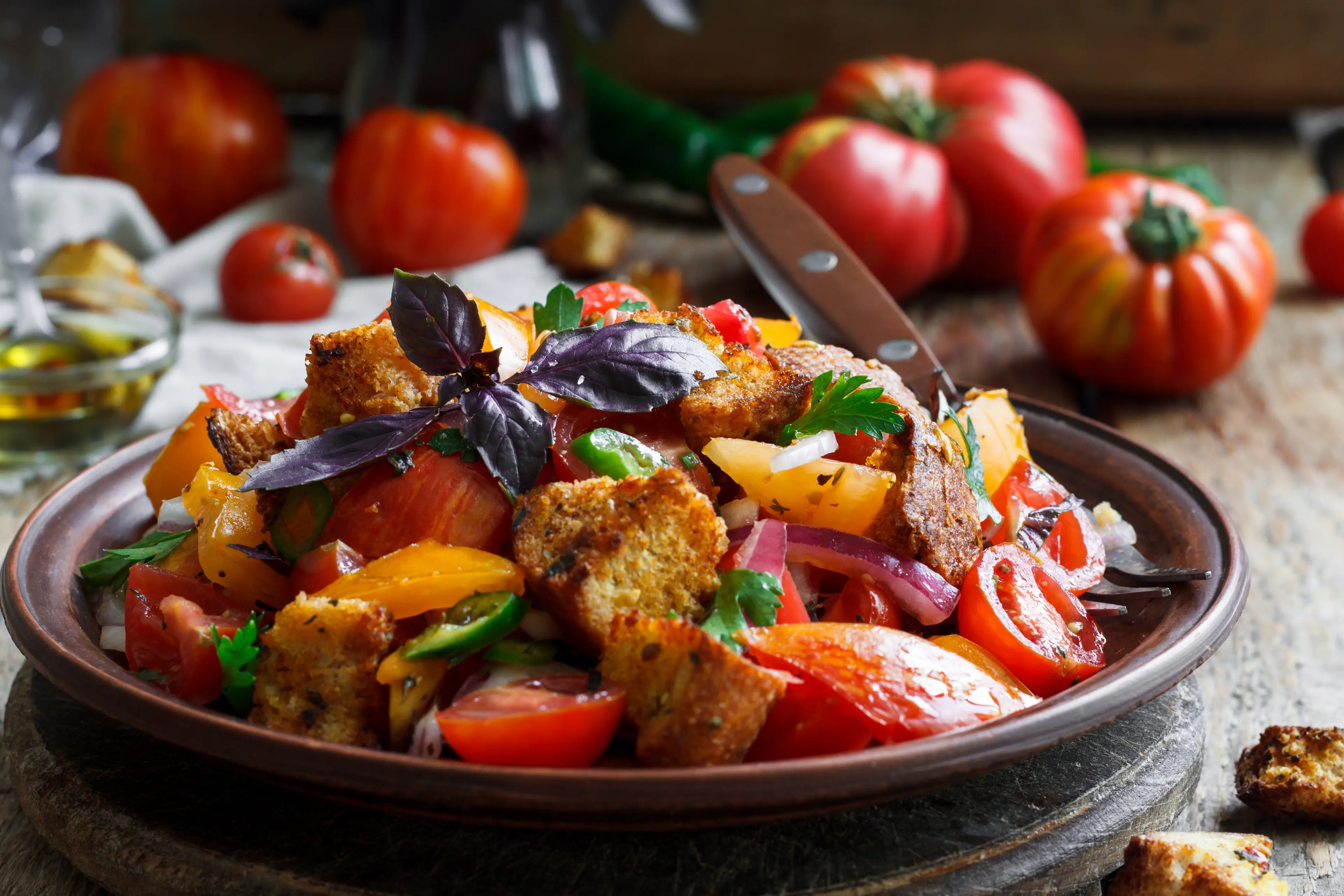
Panzanella
A Tuscan chopped salad of soaked stale bread, onions and tomatoes that is popular in the summer. It often includes cucumbers, sometimes basil and is dressed with olive oil and vinegar. It is a staple of Florentine cuisine.
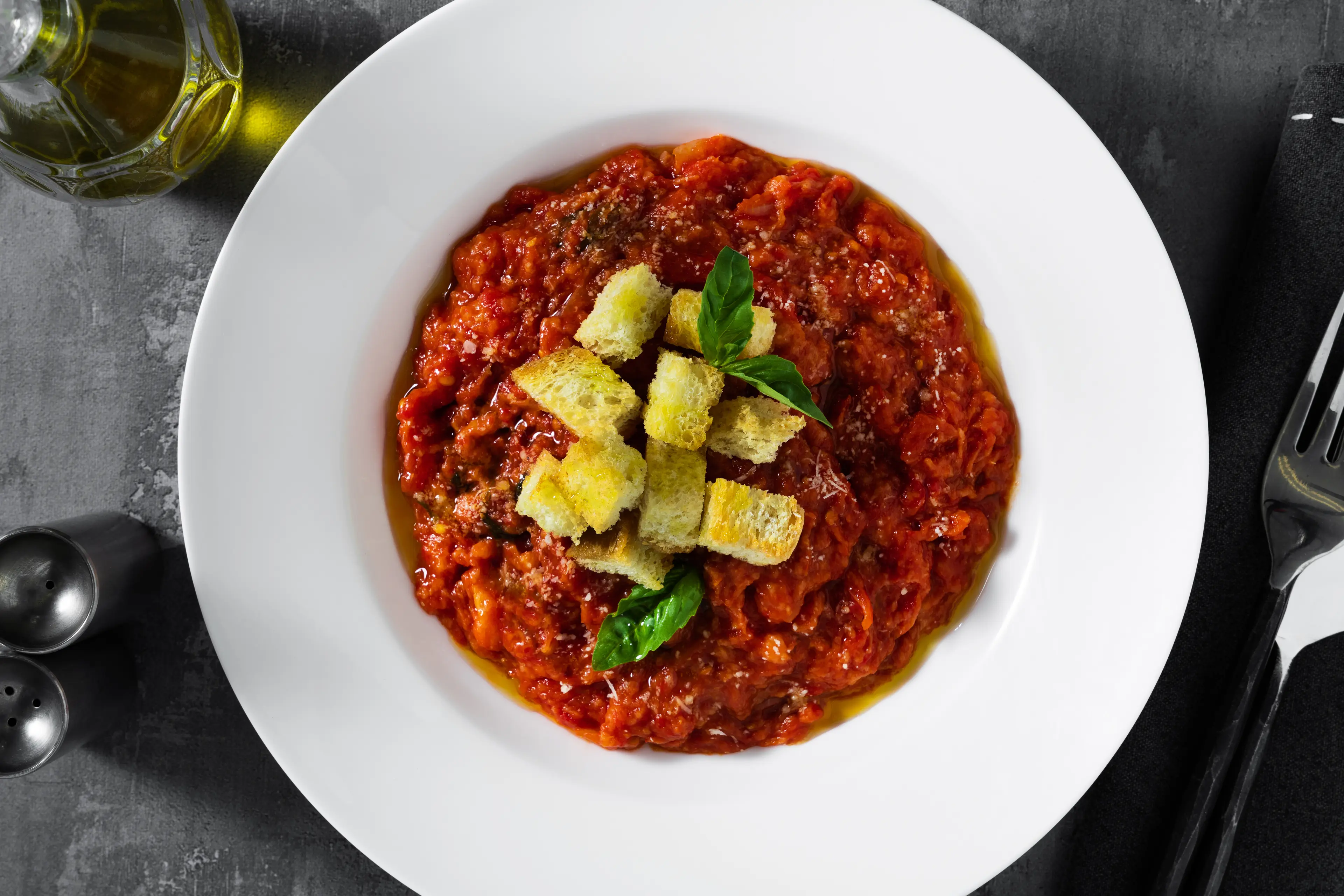
Pappa al Pomodoro
A thick Tuscan bread soup typically prepared with fresh tomatoes, bread, olive oil, garlic, basil, and various other fresh ingredients. It is usually made with stale or leftover bread, and can be served hot, room temperature, or chilled.
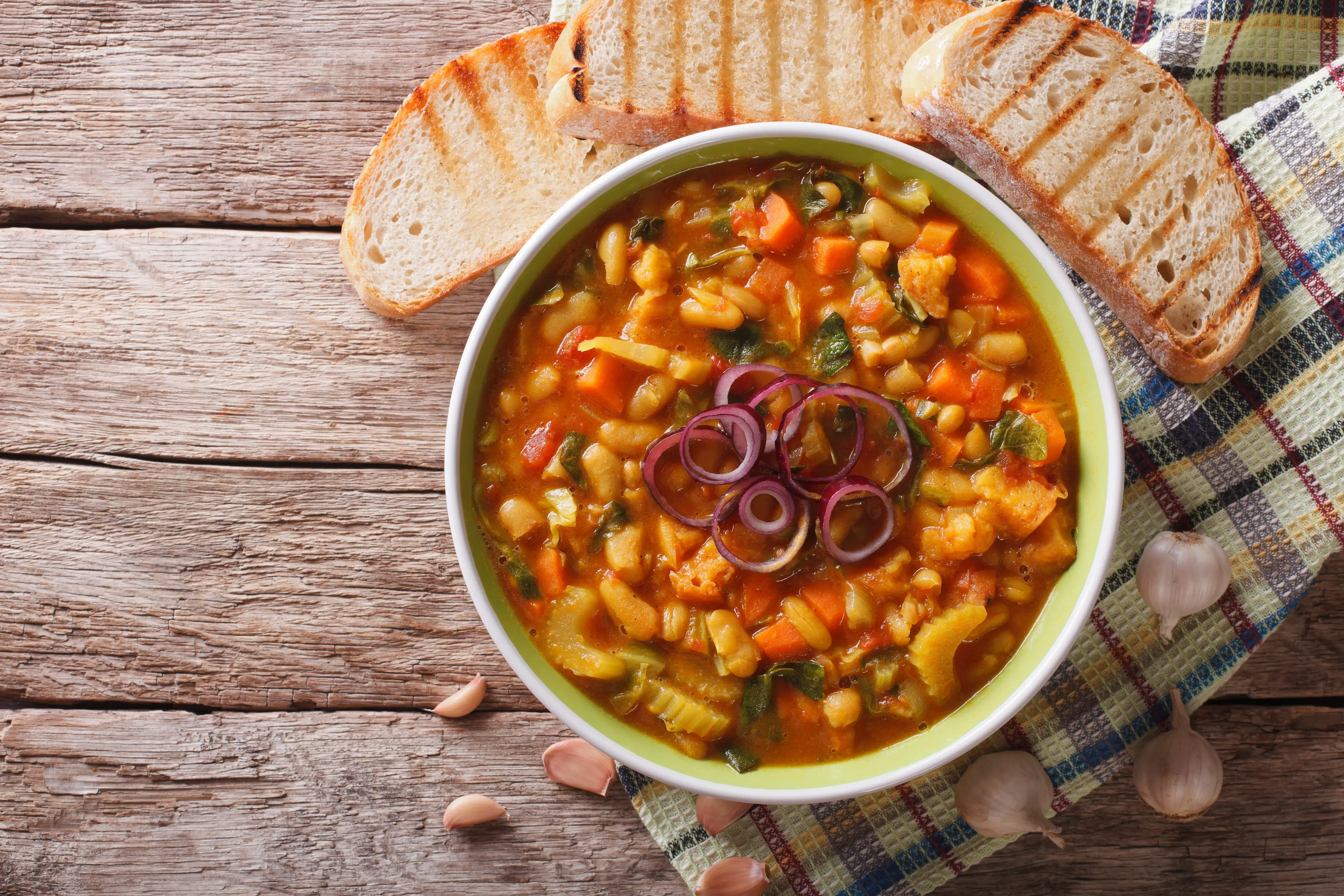
Ribollita
A famous Tuscan soup, a hearty potage made with bread and vegetables. There are many variations but the main ingredients always include leftover bread, cannellini beans, lacinato kale, cabbage, and inexpensive vegetables such as carrot, beans, chard, celery, potatoes and onion.
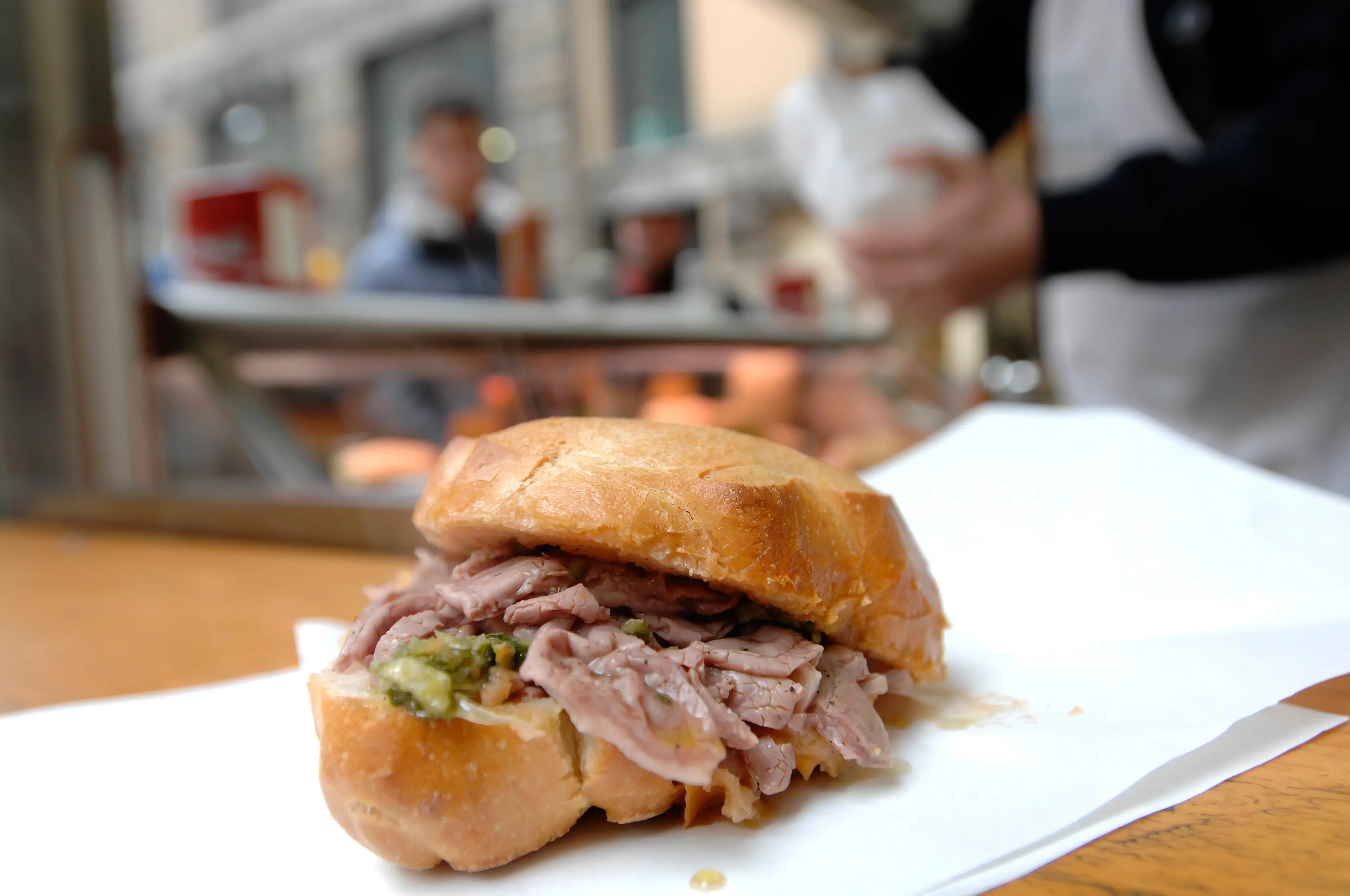
Lampredotto
A typical Florentine dish, made from the fourth and final stomach of a cow, the abomasum. It is a popular street food in Florence and it is served in a bun with green sauce and spicy oil.
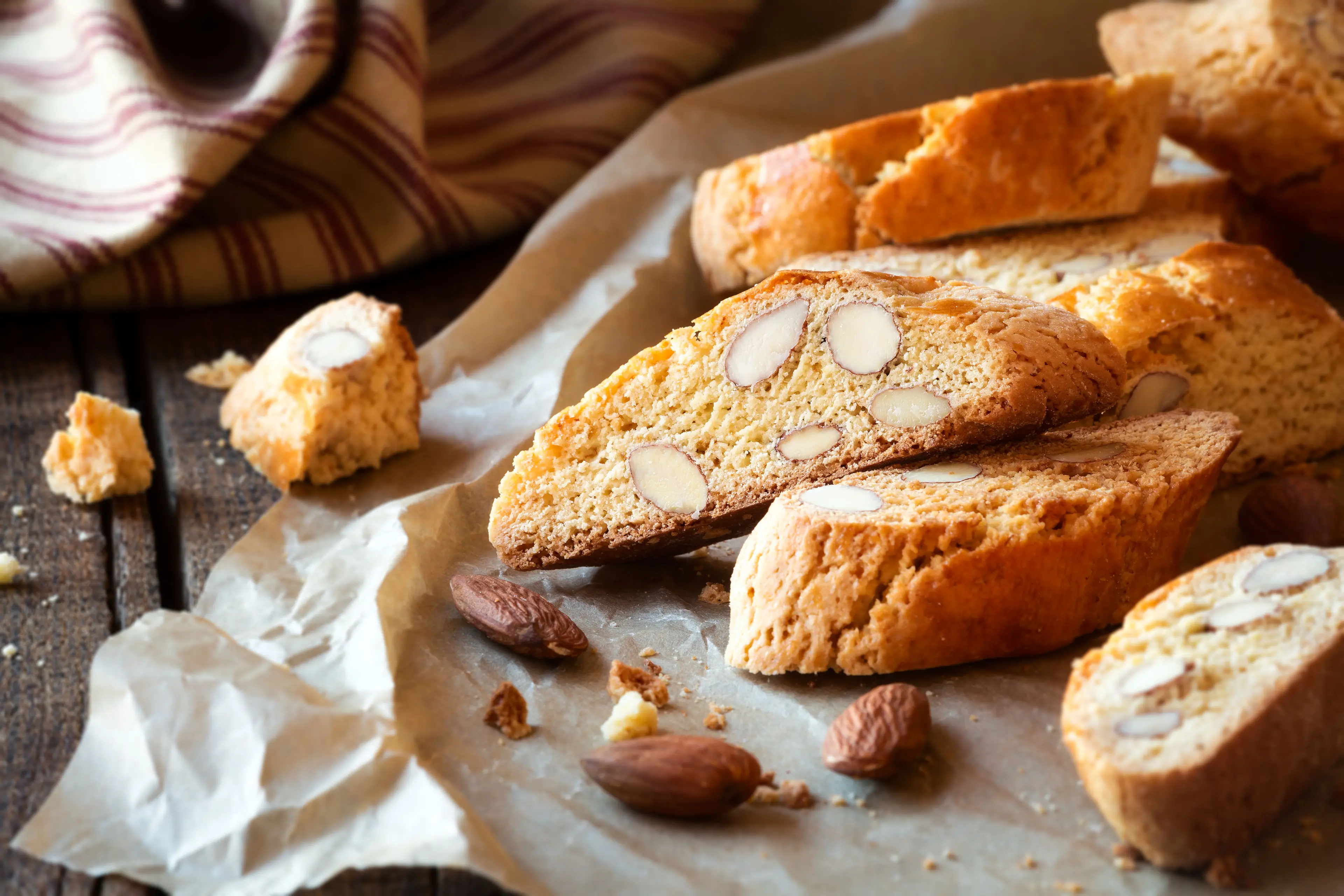
Cantucci
Also known as Biscotti di Prato, Cantucci are almond biscuits that originated in the city of Prato. They are twice-baked, oblong-shaped, dry, crunchy, and may be dipped in a drink, traditionally Vin Santo.
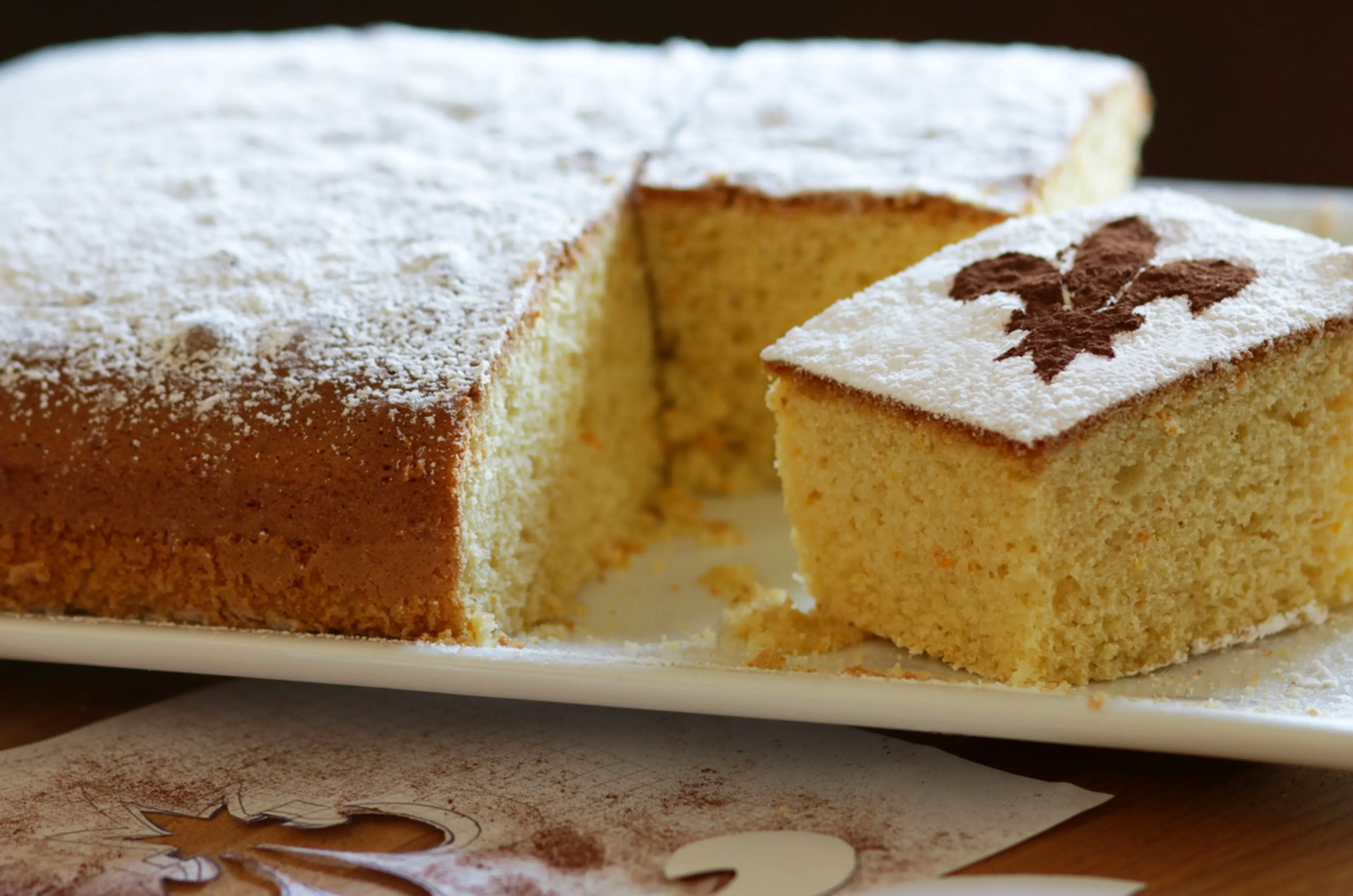
Schiacciata Fiorentina
A fluffy, orange-flavored cake that is traditionally made and served in Florence during the Carnival period. It is usually sprinkled with powdered sugar and a cocoa image of the Florentine lily.
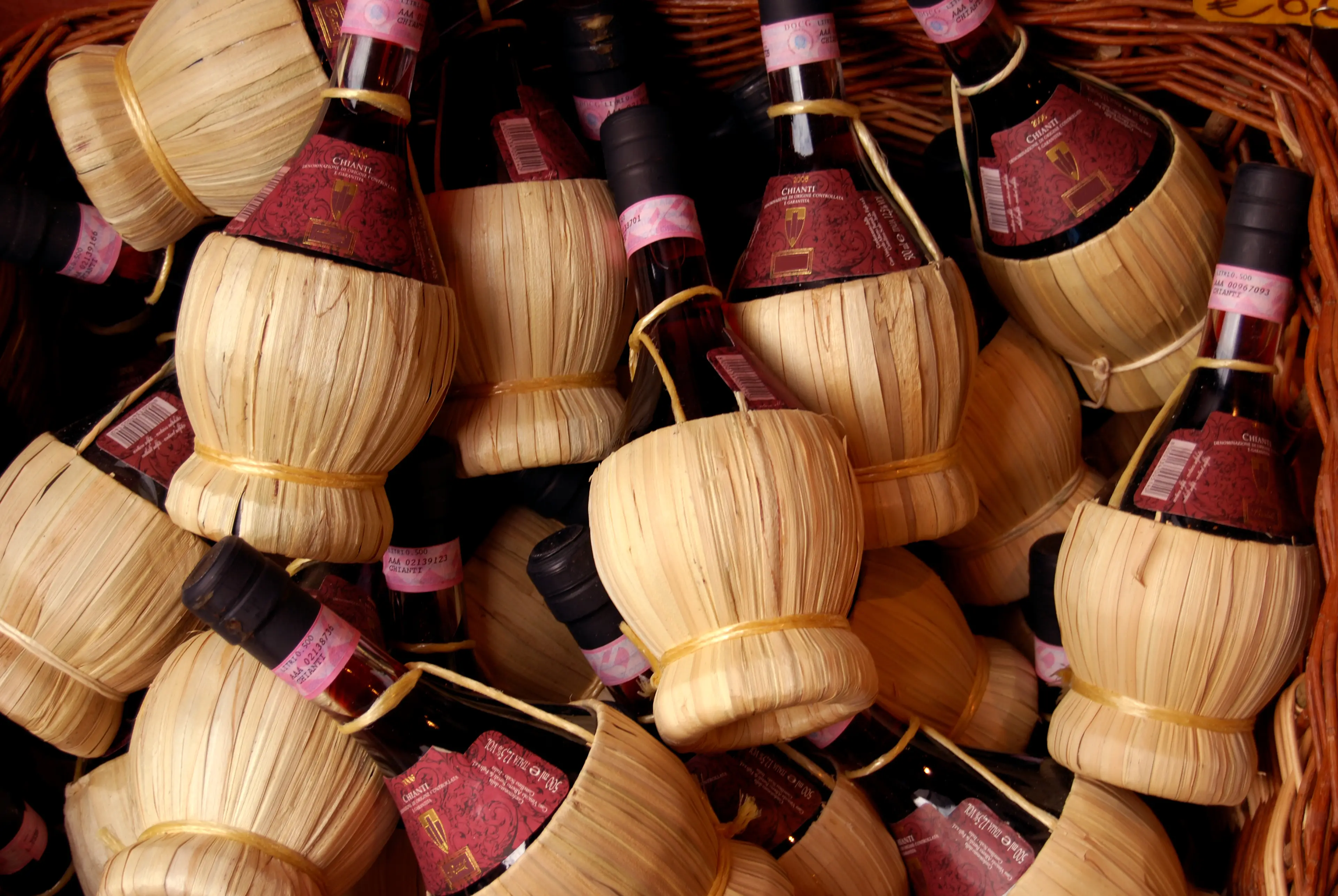
Chianti
A red wine that ranges from light-bodied to almost full-bodied, named after the Chianti region in central Tuscany. It is one of the most popular wines in Italy and it pairs well with many traditional Florentine dishes.
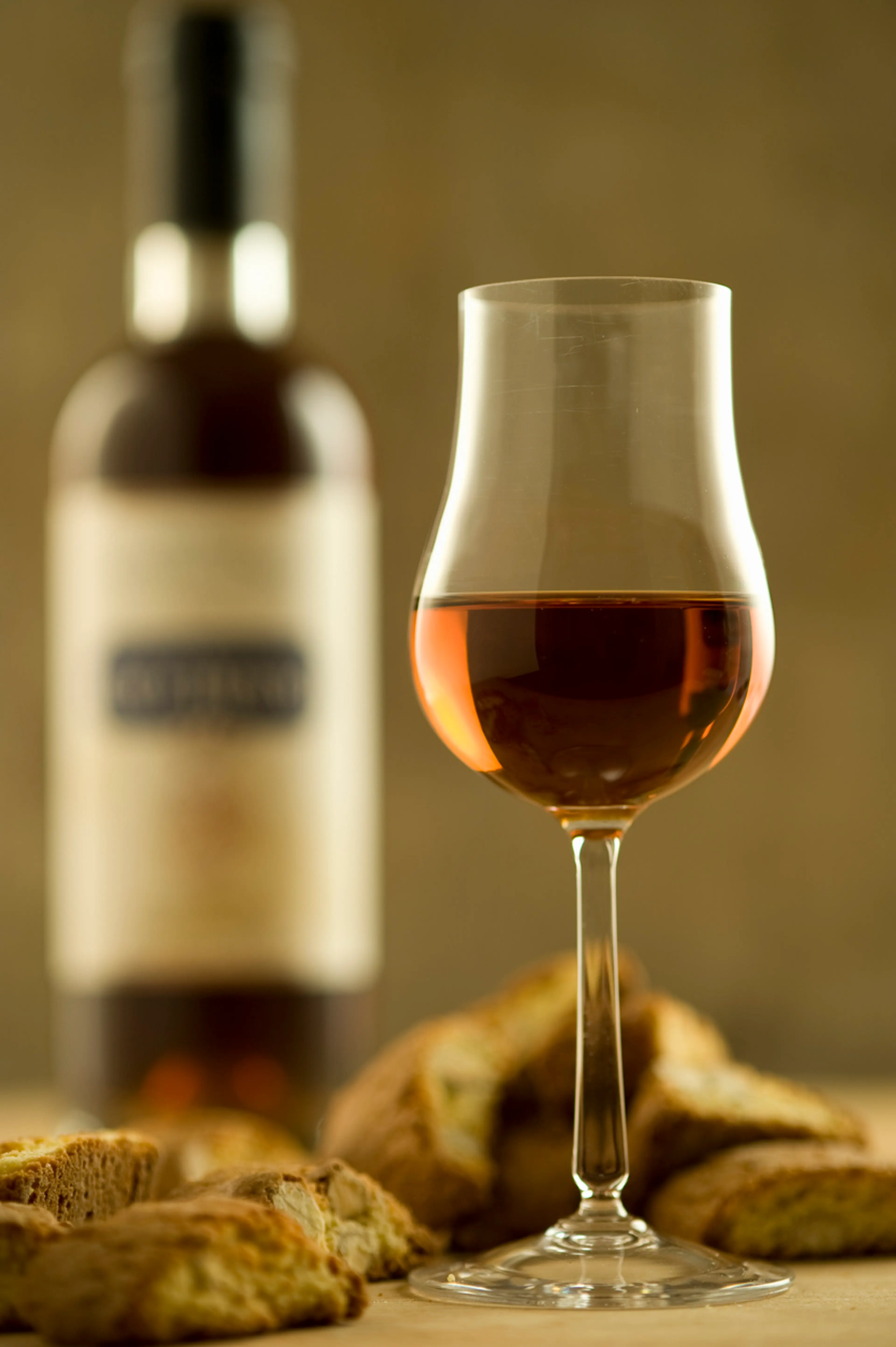
Vin Santo
A style of Italian dessert wine. Traditional in Tuscany, these wines are often made from white grape varieties such as Trebbiano and Malvasia. It is typically served with cantucci at the end of a meal.

Negroni
A popular Italian cocktail, made of one part gin, one part vermouth rosso, and one part Campari, garnished with orange peel. It is considered an apéritif and was invented in Florence, Italy.

Espresso
A type of coffee preparation method and an important part of Italian culture. In Florence, like in the rest of Italy, espresso is a staple and is often enjoyed multiple times throughout the day.

Pecorino Toscano
A firm-textured ewe’s milk cheese produced in Tuscany. Since 1996 it has enjoyed protected designation of origin (PDO) status. It can be enjoyed as a table cheese or used grated in many traditional Florentine recipes.
Best time to visit
The best time to visit Florence, Italy is typically during the spring (April to June) and fall (September and October). During these periods, the weather is generally pleasant, and the city is less crowded compared to the peak summer months. These seasons also coincide with some of the city's popular events like the Gelato Festival in spring or the wine harvest festivals in fall. However, if you're interested in visiting museums and indoor attractions without the crowds, winter can also be a good time to visit.
How to get around
Walk
Florence is a compact city with most of the major attractions located in the city center. Walking is often the best way to get around, especially in the pedestrian-only zones.
Bicycle
Florence is a bike-friendly city with many bike rental services available. It's a quick and eco-friendly way to get around the city.
Public Bus
The public bus system in Florence is extensive and can take you to most parts of the city. Tickets can be purchased at tobacco shops, newsstands, and some cafes.
Tram
Florence has a modern tram system that connects the city center with the suburbs. It's a quick and efficient way to travel longer distances.
Taxi
Taxis are readily available in Florence. They can be hailed on the street, found at taxi stands, or booked in advance.
Ridesharing
Ridesharing services like Uber are available in Florence. It's a convenient option for getting around, especially if you're traveling with a group or have a lot of luggage.
Rental Car
Renting a car can be useful if you plan to explore the Tuscan countryside. However, driving in the city center can be challenging due to the limited traffic zones and narrow streets.
Train
Florence's main train station, Santa Maria Novella, offers connections to other Italian cities and towns. It's a good option if you plan to do day trips outside of Florence.
Important information
Currency€ EUR
Time zoneUTC+1
Driving sideRight
Emergency phoneAmbulance: 112, 118; Fire: 112, 115; Police: 112, 113;
Drinking waterYes, but some opt for bottled water
Power sockets
Voltage230 V
Things to know about Florence, Italy as a first time visitor
1
Florence is a city that is best explored on foot, so pack comfortable walking shoes.
2
The city can be quite crowded, especially during the peak tourist season (April to October), so be prepared for crowds.
3
The local currency is the Euro (€). Credit cards are widely accepted, but it's always a good idea to carry some cash.
4
Tipping is not mandatory in Italy, but it's customary to leave a small amount if you're happy with the service.
5
The official language is Italian, but English is widely spoken in tourist areas.
6
Florence is in the Central European Time Zone (CET), which is 1 hour ahead of Coordinated Universal Time (UTC+1).
7
The city has a Mediterranean climate. Summers (June to August) can be hot, with temperatures ranging from 86°F to 95°F (30°C to 35°C). Winters (December to February) are mild, with temperatures ranging from 32°F to 50°F (0°C to 10°C).
8
Florence is known for its leather goods, so consider visiting the local markets for a unique souvenir.
9
The tap water in Florence is safe to drink.
10
Public restrooms can be hard to find, and many charge a small fee for use.
11
Florence is generally safe, but like any major city, it's wise to be cautious of pickpockets in crowded areas.
12
The city has strict laws against eating or sitting on steps and public buildings, so be mindful of where you take a break.
13
Smoking is banned in all indoor public places in Italy, including bars and restaurants.
14
Florence has a ZTL (Limited Traffic Zone) in the city center, which means that only authorized vehicles can enter.
15
Public transportation in Florence is reliable and efficient. The city has a network of buses and trams that can take you around the city.
16
Many museums and attractions in Florence require advance booking, so plan your itinerary ahead of time.
17
Florence is known for its cuisine. Don't miss out on trying local dishes like Bistecca alla Fiorentina (Florentine Steak) and Gelato.
18
Florence has a tourist tax that is charged per person, per night for stays in the city. The amount varies depending on the type of accommodation.
19
It's customary in Italy to say 'Buongiorno' (Good Morning) or 'Buonasera' (Good Evening) when entering shops and restaurants.
20
Most shops in Florence close for a few hours in the afternoon for 'riposo' (rest), so plan your shopping accordingly.
Basic Italian to know as a first time visitor
English phrase | Native phrase | Pronunciation | When to use it |
|---|---|---|---|
Hello | Ciao | Chow | Greeting someone |
Goodbye | Arrivederci | Ah-ree-veh-der-chee | Leaving someone |
Please | Per favore | Pair fa-voh-re | Asking for something |
Thank you | Grazie | Graht-see-eh | Showing appreciation |
Yes | Sì | See | Agreeing with someone |
No | No | No | Disagreeing with someone |
Excuse me | Mi scusi | Mee skoo-zee | Getting someone's attention |
I'm sorry | Mi dispiace | Mee dee-spya-che | Apologizing |
Do you speak English? | Parla inglese? | Par-la in-gle-se? | Asking if someone speaks English |
I don't understand | Non capisco | Non ka-pee-sko | When you don't understand what's being said |
Where is the bathroom? | Dove è il bagno? | Doh-veh eh il ban-yo? | Looking for the bathroom |
How much does it cost? | Quanto costa? | Kwan-toh costa? | Asking for the price of something |
I would like... | Vorrei... | Voh-rei | Making a request |
Help! | Aiuto! | Aye-oo-toh | In case of emergency |
Can I have the bill, please? | Posso avere il conto, per favore? | Pos-so ave-re il con-to, per fa-voh-re | Asking for the bill at a restaurant |
Where is...? | Dove è...? | Doh-veh eh | Asking for directions |
Good morning | Buongiorno | Bwon-jor-no | Greeting someone in the morning |
Good evening | Buonasera | Bwo-na-se-ra | Greeting someone in the evening |
Good night | Buonanotte | Bwo-na-not-te | Saying goodnight |
Cheers! | Salute! | Sa-loo-te | Making a toast |
Packing List
Clothing
Comfortable walking shoes
Lightweight clothing
A light jacket or sweater for evenings
Underwear and socks for 3 days
Sleepwear
Swimsuit (if your hotel has a pool)
Sunglasses
Hat for sun protection
Toiletries
Travel-sized shampoo and conditioner
Travel-sized body wash or soap
Toothbrush and toothpaste
Deodorant
Razor and shaving cream
Makeup and makeup remover
Sunscreen
Hand sanitizer
Travel-sized first aid kit
Prescription medications
Contact lenses and solution (if needed)
Travel documents and essentials
Passport
Driver's license or other ID
Credit and debit cards
Cash in local currency
Hotel reservation confirmation
Travel insurance documents
Emergency contact information
Maps and guidebooks
Electronics and gadgets
Smartphone
Charger for smartphone
Universal power adapter
Camera
Charger for camera
Headphones
Portable power bank
Miscellaneous items
Travel pillow
Earplugs and eye mask
Snacks
Water bottle
Travel-sized laundry detergent
Travel-sized umbrella
Books or e-reader for downtime
Italian phrasebook
Weather Conditions
Florence, Italy, is a city that experiences a humid subtropical climate. This means that it has hot, humid summers and cool, damp winters. If you're planning to visit during the summer months (June to August), be prepared for high temperatures that can reach up to 86°F (30°C). It's advisable to pack light clothing, sunscreen, and a hat to protect yourself from the sun. Also, ensure to stay hydrated and take breaks in shaded areas when sightseeing. In contrast, the winter months (December to February) can be quite chilly with temperatures dropping to around 32°F (0°C). Therefore, pack warm clothing, including a heavy coat, scarves, gloves, and hats. Despite the cold, winter can be a great time to visit as the city is less crowded and the lines for major attractions are shorter. The shoulder seasons, spring (March to May) and fall (September to November), offer more mild and comfortable temperatures, ranging from 50°F (10°C) to 77°F (25°C). These periods are often considered the best times to visit Florence, as the weather is pleasant and the city is less crowded than in the summer. Regardless of when you visit, always remember to check the local weather forecast before your trip to pack appropriately. Also, keep in mind that weather can be unpredictable, so it's always a good idea to pack a compact umbrella or a light rain jacket. Lastly, Florence is a city best explored on foot, so regardless of the season, comfortable walking shoes are a must. Enjoy your trip to this beautiful Italian city!
| Month | Hi / Lo (°C) | Weather Overview |
|---|---|---|
January | 15° / 1° | January is the coldest month in Florence with occasional snowfall. It's a good time to visit museums and indoor attractions. |
February | 16° / 2° | February is still chilly, but the city starts to warm up slightly. It's a great time to explore the city without the crowds. |
March | 19° / 5° | March sees the arrival of spring with warmer temperatures and blooming flowers. It's a good time for outdoor activities. |
April | 22° / 8° | April is a pleasant month with mild temperatures. It's a great time to visit the gardens and parks in Florence. |
May | 25° / 11° | May is a beautiful month with warm temperatures and plenty of sunshine. It's an ideal time for sightseeing and outdoor activities. |
June | 29° / 15° | June is the start of the summer season with hot temperatures. It's a perfect time for beach trips and outdoor dining. |
July | 32° / 18° | July is the hottest month in Florence. It's a great time to enjoy gelato and cool off in the city's fountains. |
August | 32° / 18° | August is another hot month, but the city is less crowded as locals go on vacation. It's a good time to visit popular tourist spots. |
September | 29° / 15° | September is a pleasant month with mild temperatures. It's a great time to visit the vineyards and enjoy the wine harvest. |
October | 25° / 11° | October sees the arrival of autumn with cooler temperatures. It's a good time for hiking and enjoying the fall foliage. |
November | 21° / 7° | November is a cool month with occasional rain. It's a good time to visit museums and enjoy the local cuisine. |
December | 17° / 3° | December is a festive month with Christmas markets and lights. It's a good time to enjoy the holiday spirit in Florence. |
Did you know?
Places near by Florence, Italy

Pisa
Famous for its iconic Leaning Tower

Lucca
Known for its well-preserved Renaissance walls

Siena
A city known for its medieval brick buildings

Chianti
Famous for its wine and beautiful landscapes

San Gimignano
Known for its medieval architecture, unique in the preservation of about a dozen of its tower houses

Cinque Terre
A string of centuries-old seaside villages on the rugged Italian Riviera coastline

Bologna
A vibrant and historic city known for its rich food, twin towers and beautiful porticoes

Venice
Known for its beautiful canals and architecture

Rome
The capital of Italy, known for its rich history and architecture

Milan
Known as a global capital of fashion and design

